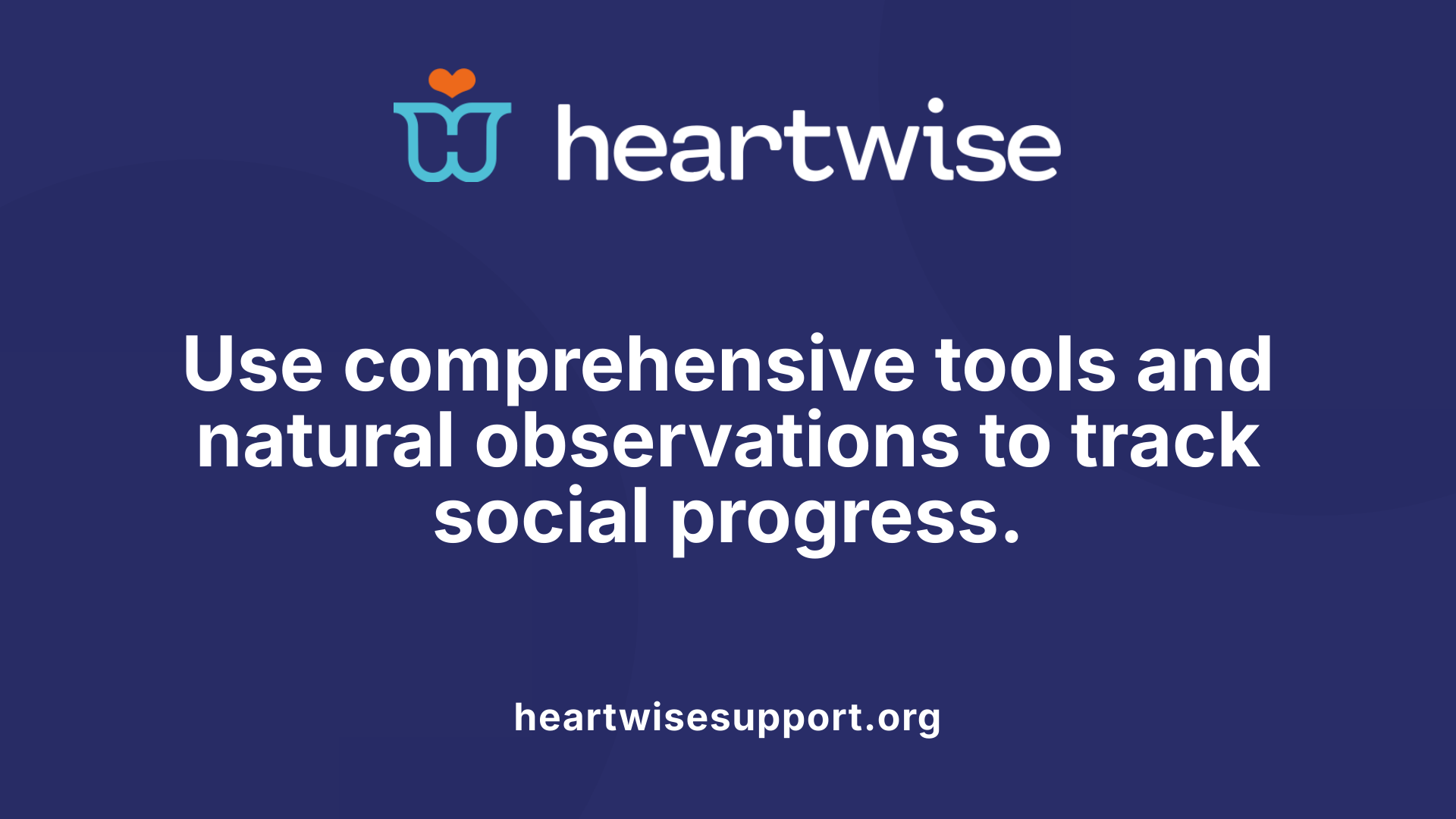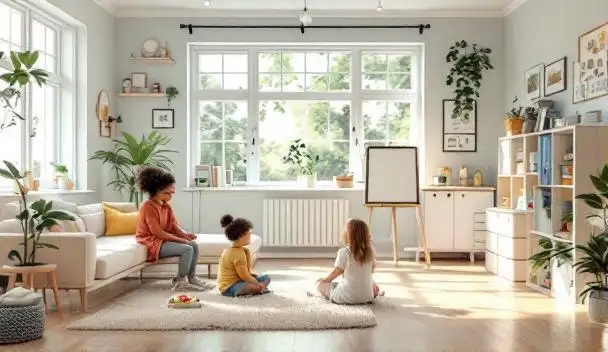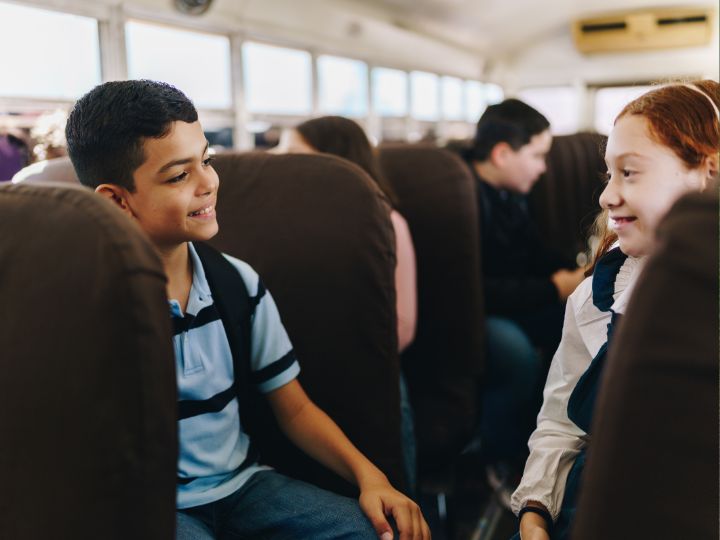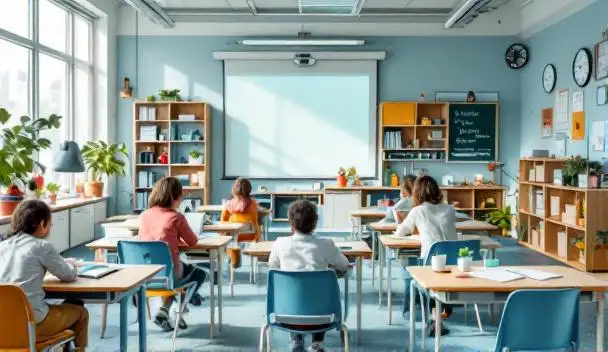Understanding ABA in Social Skills Development
Applied Behavior Analysis (ABA) is a scientifically validated approach widely used to support children with autism in developing essential social skills. This article explores the strategies, techniques, and assessments involved in ABA-based social skills training, highlighting how tailored interventions foster meaningful social interactions and life skills.
Core Strategies in Teaching Social Skills with ABA

What are general strategies for teaching social skills in children with autism?
Teaching social skills to children with autism requires a blend of structured, explicit strategies that are tailored to each child's needs. ABA programs typically incorporate social skills groups, role-playing, social stories, and visual supports. These tools help children understand social rules and cues in an engaging way.
Breaking skills into manageable steps makes learning more accessible. For example, a child might first learn to make eye contact, then initiate a greeting, and finally progress to engaging in small conversations.
Modeling is a key technique—therapists or parents demonstrate appropriate behaviors, and children imitate them. Reinforcement provides positive feedback for successful interactions, encouraging children to practice behaviors like sharing or turn-taking.
Real-life practice in natural settings supports the transfer of skills. Collaborative efforts among speech therapists, occupational therapists, educators, and families ensure that interventions are consistent and responsive.
In addition to direct teaching, involving peers through activities encourages social interaction. Visual schedules and social goals included in educational plans further support learning. Continuous assessment allows for adjustments, ensuring interventions remain effective.
Sensory considerations and accommodations tailor the environment to each child's needs, fostering more successful social engagement.
Overall, these strategies create a comprehensive, engaging, and adaptable approach to teaching social skills that promote independence and social integration.
How do ABA-based social skills programs benefit children with autism?
ABA-driven social skills programs bring numerous benefits for children with autism. They improve the child's ability to understand and respond to social cues, communicate effectively, and develop adaptive behaviors. These skills are crucial for functioning in social environments like school, family, and community settings.
Programs are highly personalized, starting with comprehensive assessments that identify specific social deficits. Interventions, such as positive reinforcement, modeling, role-playing, and natural environment training, are then tailored to teach vital skills like joke-telling, emotional recognition, conflict management, and collaborative play.
A core advantage of ABA programs is their focus on the generalization of skills. By involving caregivers and educators, children learn to apply their social skills across different situations, boosting their confidence.
Moreover, ABA strategies support emotional regulation and problem-solving abilities, helping children handle social conflicts and navigate complex interactions more effectively.
Research shows that ABA interventions lead to measurable progress in social interaction, communication, and independence. These improvements can significantly enhance a child’s quality of life and ease their social integration.
By following a structured, evidence-based approach, ABA programs empower children with autism to develop meaningful social connections and experience greater social participation.
What specific methods are used in teaching social skills through ABA?
ABA techniques for teaching social skills include discrete trial training (DTT), natural environment teaching (NET), and pivotal response treatment (PRT). These methods focus on skill acquisition and reinforcement tailored to the child's natural learning process.
Discrete trial training involves breaking down complex social behaviors into smaller, teachable components. For instance, a child might learn to greet a peer through repeated, structured practice until the behavior becomes natural.
Natural environment teaching emphasizes learning within everyday contexts—such as playgrounds, grocery stores, or home settings—allowing children to practice skills in realistic situations. This approach fosters better generalization of social behaviors.
Pivotal response treatment targets pivotal areas like motivation and self-management, which influence broader social skills. PRT encourages children to initiate interactions and respond to social cues voluntarily.
Additional strategies include role-playing, which offers a safe space to practice social responses, and social skills groups where children observe and interact with peers.
Visual supports such as social stories, social scripts, and visual checklists clarify expectations, making social rules explicit. Chaining and shaping techniques progressively build complex skills.
All these methods are applied systematically, with continuous data collection, to monitor progress and adapt interventions for the best outcomes.
What are some practical ways parents and caregivers can reinforce social skills at home?
Parents and caregivers play a vital role in reinforcing social skills developed through ABA therapy. They can do this by creating social opportunities at home, such as family game nights or playdates, where children practice sharing, turn-taking, and communication.
Modeling appropriate behaviors is crucial; demonstrating polite greetings, active listening, and empathetic responses provides children with clear examples.
Using visual supports like social stories or visual schedules helps children recognize social expectations and routines.
Reinforcing learning with praise, rewards, or preferred activities encourages the continued practice of social behaviors.
Encouraging empathy by discussing feelings and perspectives can enhance emotional understanding. Collaboration with educators ensures consistency across environments.
Patience and consistency are essential. Repetition and positive feedback build confidence and mastery.
Engaging children in conversations about their social experiences helps them reflect and learn from interactions. Overall, a supportive and structured environment nurtures the ongoing development of social skills.
Activities and Interventions in ABA Social Skills Training

What are common social skills training activities used in ABA therapy?
ABA therapy incorporates a variety of structured activities to teach social skills in an engaging and effective manner. Role-playing games, such as "What Would You Do?", are popular tools that help children understand different social scenarios, encouraging empathy and perspective-taking. These activities allow children to practice appropriate responses in simulated situations, building confidence and social awareness.
Social stories are another core activity, which involve creating written or visual narratives about specific social situations. These stories help children comprehend the expected behavior, understand social cues, and learn how to respond correctly. For example, a social story about sharing toys can guide a child on when and how to share with peers.
In addition to role-plays and stories, activities like the Name Game and designated sharing times help children practice social initiation, active listening, and engaging in conversations about their interests. Visual supports, such as social skills boards and schedules, serve as cues and reminders for appropriate social interactions.
Structured behavior modeling techniques, including Behavioral Skills Training, further support skill acquisition by demonstrating desired behaviors and providing opportunities for practice. Sensory and calming activities, like emotion cards and mindfulness exercises, are incorporated to help children regulate emotions during social interactions.
Finally, everyday activities—such as group games, role-playing multiple scenarios, and practicing social skills during routines—are integrated into therapy to ensure skills are generalized across settings, fostering real-world social competence and confidence.
What are effective strategies for teaching social skills in children with autism within ABA programs?
Teaching social skills in children with autism requires a combination of clear, systematic strategies tailored to individual needs. Explicit instruction is essential, breaking down complex social behaviors into small, manageable steps supported by visual aids and social narratives.
Modeling appropriate behaviors is a fundamental approach, where therapists demonstrate social interactions such as turn-taking, initiating conversations, and sharing. These models can be reinforced through role-playing activities, where children get to practice responses in safe, structured environments.
Peer pairing and small-group activities are highly effective, as they mirror natural social settings and provide opportunities for reciprocal interactions. Reinforcing positive behaviors with specific praise and tangible rewards encourages children to repeat desired actions.
Supporting communication is crucial, especially in understanding non-verbal cues like facial expressions and body language. Visual supports, including social stories, cues, and picture schedules, help children recognize and interpret social signals.
Creating structured environments, such as small lunch groups, helps children apply social skills in real-life situations. Clear expectations and visual prompts are used consistently to promote generalization beyond therapy sessions.
Overall, the combination of visual supports, role-playing, reinforcement, and structured social opportunities forms the backbone of effective social skills teaching within ABA programs, helping children develop confidence and social competence.
Assessment and Measurement of Social Skills in ABA

How can social skills be assessed and measured in children undergoing ABA therapy?
Assessing social skills accurately is essential for tailoring effective ABA programs. Therapists employ multiple methods to gauge a child's progress and identify specific areas for improvement.
One common approach involves standardized assessment tools that provide an overall picture of social competencies. An example is the TRIAD Social Skills Assessment, which evaluates various social behaviors systematically. It helps clinicians pinpoint deficits in areas such as communication, sharing, turn-taking, and understanding social cues.
In addition to standardized tests, direct observation protocols are extensively used. Therapists observe children during natural play or social interactions, noting behaviors like eye contact, initiating conversation, or conflict resolution. This real-world observation allows for a detailed understanding of how social skills manifest in everyday settings.
Behavior rating scales completed by parents, teachers, or caregivers complement these assessments by capturing behaviors across different environments. These scales often cover a range of social behaviors and emotional responses.
Monitoring progress over time is crucial for adjusting interventions. Therapists perform periodic reassessments, comparing new data with previous scores. This continuous tracking helps determine which strategies are working and whether goals are being met.
Using a combination of these assessment methods ensures a comprehensive understanding of a child's social skill development. It also provides a reliable basis for modifying therapy goals and techniques to maximize the child's social integration and overall effectiveness.
| Measurement Method | Description | Purpose |
|---|---|---|
| Standardized Assessment Tools | Formal instruments like TRIAD for evaluating social skills | Identifies specific deficits and strengths |
| Direct Observation Protocols | Watching children in natural settings to record behaviors | Understands behaviors in real-life interactions |
| Behavior Rating Scales | Reports from caregivers and teachers on child's social behaviors | Provides multi-environment perspective |
| Progressive Reassessment | Repeating assessments periodically to monitor change | Measures progress and guides intervention adjustment |
This multi-faceted approach allows practitioners to measure social development robustly, ensuring that ABA therapy remains responsive to each child's evolving needs.
Goals and Techniques in ABA Social Skills Development

What are the goals and approaches of ABA in developing social skills for children with autism?
Applied Behavior Analysis (ABA) targets the improvement of social skills in children with autism through systematic, evidence-based methods. The primary goal is to help children interpret social cues, engage in reciprocal communication, and build meaningful peer relationships.
ABA approaches break down complex social behaviors into smaller, manageable steps, which are taught sequentially. This includes teaching skills such as eye contact, sharing, turn-taking, and understanding emotions. The interventions are highly structured, often involving techniques like modeling, prompting, chaining, and reinforcement.
Group activities play a vital role, providing opportunities for children to practice social skills in natural settings. These can be in the form of social skills groups, summer camps, or school programs designed to facilitate peer interaction.
Parents, teachers, and caregivers are actively involved to ensure these skills are practiced outside therapy sessions. They receive training on how to reinforce behaviors, create social opportunities, and support skill generalization across environments.
Overall, ABA's approach is to reinforce positive social interactions, reduce disruptive behaviors, and promote the development of friendships, thereby aiding children in their integration into society.
Importance of Generalization and Involving Caregivers

How can social skills be assessed and measured in children undergoing ABA therapy?
Measuring social skills in children receiving ABA therapy involves a variety of assessment tools and observation methods. Standardized assessments like the TRIAD Social Skills Assessment offer a detailed look at a child's social behaviors, pinpointing specific areas for improvement. These tools help therapists identify which skills need targeted intervention and track progress over time.
In addition to formal tests, clinicians observe children directly during natural interactions. Behavior rating scales completed by parents, teachers, and caregivers provide valuable insights into how children demonstrate social skills across different settings. This multi-method approach ensures a comprehensive understanding of the child's development.
Progress is regularly monitored through follow-up assessments and ongoing observations. This data-driven process allows therapists to adapt interventions, ensuring that social skills are being effectively developed and generalized to real-life situations.
What are the goals and approaches of ABA in developing social skills for children with autism?
ABA therapy aims to equip children with autism with functional social skills that promote inclusion and meaningful interactions. The approach involves breaking complex social behaviors into small, teachable units using methods like modeling, prompting, and reinforcement.
Role-playing, social stories, and social skills groups are common strategies to practice and reinforce these skills. By engaging children in structured activities with peers, parents, and teachers, ABA prevents skills from being isolated to therapy sessions and encourages their application in everyday life.
Interventions emphasize consistency, with rewards like praise or tangible incentives to motivate children and reinforce positive behaviors. Parent training is also crucial; caregivers learn to support social skill development at home and in community settings, making the skills more likely to stick.
The core goal is to foster active participation in social exchanges, such as initiating conversations, sharing, taking turns, understanding others’ emotions, and resolving conflicts. These efforts help children build friendships, improve communication, and participate fully in their social environment.
How does skill generalization across different environments take place?
Skill generalization is essential for children to use social skills reliably outside of therapy settings. To promote this, ABA programs incorporate activities across multiple environments, such as home, school, and community.
Therapists coordinate with parents and teachers to create consistent routines, cues, and reinforcement strategies in various settings. Visual supports like social stories or schedules are used to cue appropriate behaviors universally.
Involving caregivers and educators ensures that children receive the same messages and reinforcement, which strengthens the likelihood that skills learned in therapy will transfer to everyday life.
What is the role of caregivers and educators?
Parents, teachers, and other caregivers are active partners in ABA social skills training. They help create social opportunities, model appropriate behaviors, and provide immediate positive feedback when a child demonstrates a skill.
Caregivers are trained to recognize social cues, reinforce desired behaviors, and implement consistent routines that encourage social interaction. They may also use visual supports or social stories at home to supplement therapy.
Involving educators involves collaborative planning, such as including social skills goals in classroom activities and peer interactions. This teamwork ensures a cohesive approach that supports skill generalization.
How can parent training and in-home reinforcement support social skills?
Parent training programs educate caregivers about ABA principles and effective strategies for reinforcing social skills at home. Caregivers learn to create social opportunities, like play dates or family conversations, that encourage practicing skills like turn-taking and sharing.
Visual supports, such as social stories or checklists, help children understand what is expected during social interactions. Consistent reinforcement—praise, tokens, or rewards—for successful social behaviors increases motivation and helps these skills become habitual.
In-home reinforcement extends the progress made in therapy, ensuring that social skills are practiced regularly and smoothly transitioned into natural settings. Parental involvement is vital for achieving long-lasting improvements in social competence and community integration.
Fostering Social Skills for a Better Future
ABA techniques for teaching social skills are fundamental in helping children with autism build the essential interpersonal skills for successful everyday interactions. By combining structured learning, natural environment practice, visual supports, and caregiver involvement, these methods ensure that children not only acquire social skills but also retain and generalize them across various settings. Continued assessment and tailored interventions empower children to develop confidence, independence, and meaningful relationships, paving the way toward greater social inclusion and improved quality of life.
References
- Developing Social Skills Through ABA Therapy for Autism
- Social Skills Training in Applied Behavior Analysis? ASD
- Harnessing ABA Therapy for Social Skills Development in Autism
- Teaching ABA Social Skills to Students with Autism - TeachTown
- Common Social Skills ABA Goals and How They Help Children
- ABA Techniques for Teaching Social Skills - Learn.Do Bulletin
- How ABA Therapy Helps with Social Skills - PediaPlex
- Step-by-Step Guide to Enhancing Social Skills in Autism
- How ABA Therapy Helps With Social Skills











